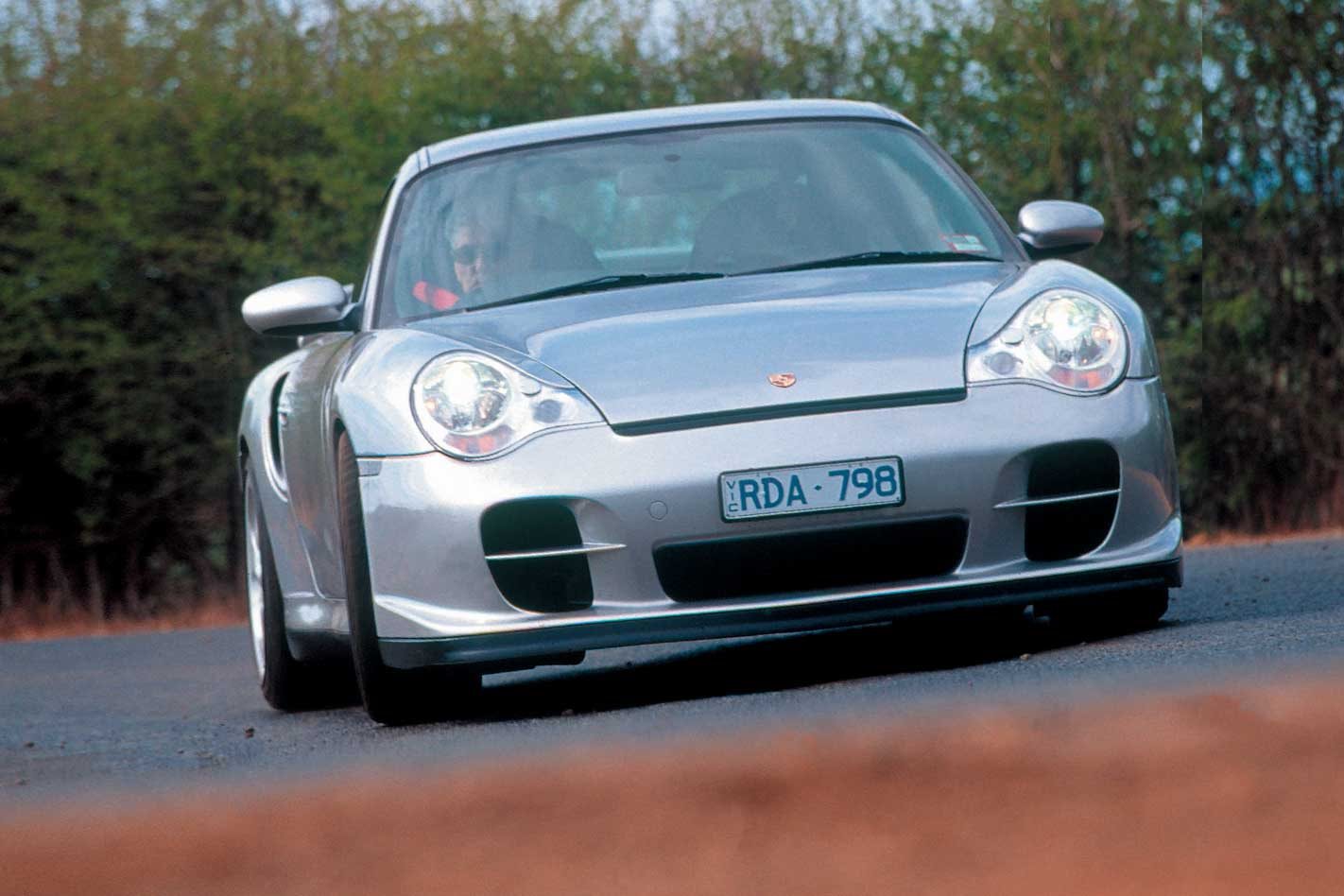I have a favourite mountain pass, which I suppose is the same for everyone else who likes a drive.
This review was originally published in MOTOR’s December 2001 issue
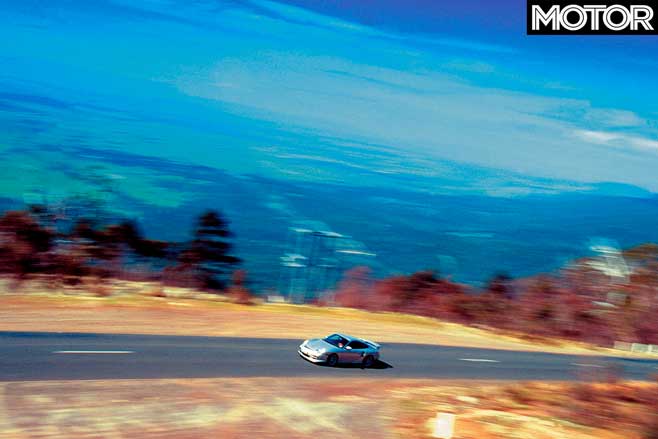
There’s also a good chance the surface will be slippery, given the micro-climate on the far side gets twice the average rainfall of the Mekong Delta. So I’m still wondering whether, after all, this was the best place to take the GT2.Don’t get me wrong: this isn’t the intro to the world’s most embarrassing “honey, I crashed the Porsche” story. It’s just that when you’re talking 340 kW, rear-drive and gearing good for 315 km/h. what’s normal in the real world suddenly takes on a new and significant meaning. That is, the word “performance” as it is applied to 99.9 per cent of the car world suddenly needs re-definition. This is a very fast car, and your average Australian goat track is not its natural hunting ground.Haven’t heard of the GT2? Maybe you should go back to reading Stamp Collector Monthly. This is the car that takes the mantle from the 911 Turbo as the fastest production Porsche. Put simply, it takes the Turbo’s basic premise of a twin-turbo, 3.6-litre flat six in a 911 body, strips out unnecessary kilogram caused by all-wheel-drive and luxuries like the back seat, pumps power up by 31kW and adds more rubber underneath and a slightly more wicked aero kit. That’s not the totality of the GT2’s curriculum vitae, but you’re probably getting the picture. This is not a car for sissies.
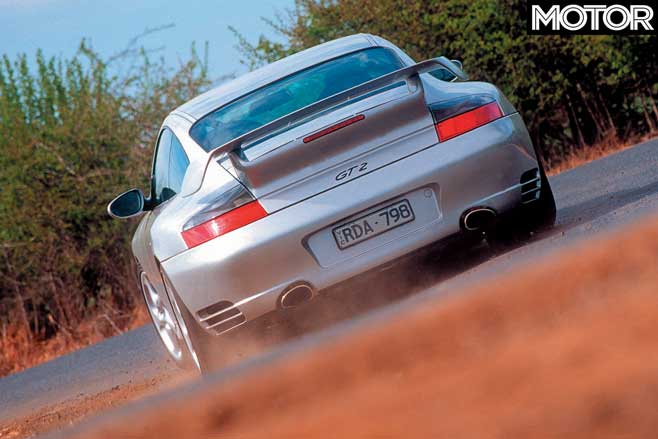
Want some more specifics? As with the Turbo, the compression is high at 9.4:1, but the GT2’s new intercoolers reduce the chance of detonation. Boost has been lifted over the Turbo by 0.2bar, resulting in maximum power output of 340kW at 5700rpm, and a truly massive torque peak of 620Nm at 3500. All this through the rear wheels with no traction control but the 315/30R18 rear Michelin Pilots are a little wider than the Turbo’s.And thanks to horrible weather, we didn’t run performance numbers. So until we do, Porsche’s figures give a guide. How do zero to 100km/h in 4.1 seconds, 0-160 in 8.5 and 0-200 in 12.9 sound?I can tell you how they feel, or at least the first part of it. We thought the 911 Turbo was about as good as it got in terms of sheer acceleration, but the GT2 takes that up another notch. Sure, there’s the extra power, but at 1440kg the GT2 is also 100kg lighter, so it’s got physics on its side.
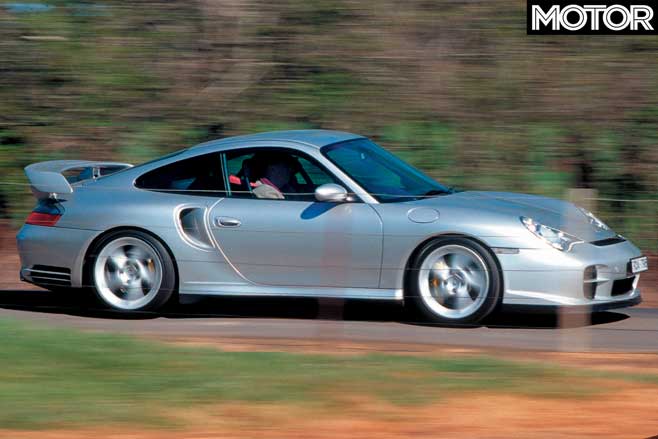
The result is a car that is very, very hard to keep at legal speeds. By the time first gear has been dispatched, even after what seems a moderately slow take-off, you can wave goodbye to 60km/h, and 100km/h disappears in a blink. The expected tyre-smokin’ wheelspin isn’t there, though: the fat rubber, and the 911’s inherent traction thanks to the rearward weight bias means it takes a concerted and very socially irresponsible big-rev clutch-dump to break the Michelins loose.
The acceleration is phenomenal, as is this engine. There’s a hint of off-boost lag at low revs but get past that and the GT2 is on an express elevator to some amazing speeds as the turbo winds-up and pulls the car like a giant rubber band into the horizon.There’s no doubting that large numbers of the GT2 are destined for the race track. Amazingly enough, 20 examples have headed for Australia at a price of $400,000 a pop and all have been sold. Of those, some like the car here have a Clubsport option fitted that takes care of track-safety items such a half-cage, fire extinguisher and race seats.
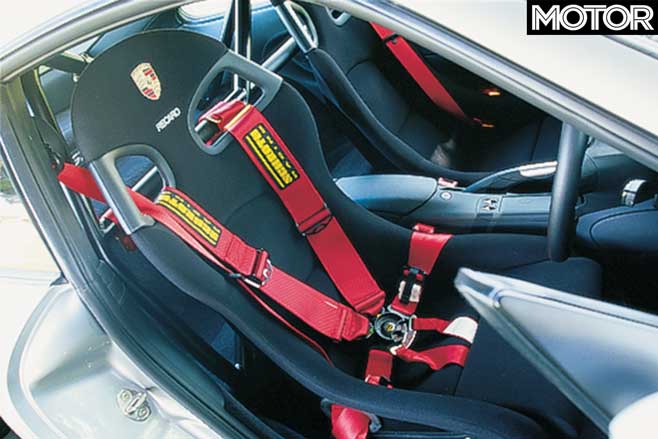
Race cars don’t often translate well to road use, although the GT2’s suspension is the same in standard or Clubsport guise. That doesn’t mean it’s a limo; quite the opposite. The suspension has been fully worked over and lowered by 20mm compared with the Turbo. The result, along with the high, rear wing and air intake ahead of the bonnet opening is one of sheer testosterone, and pure purpose.Unfortunately it also means the front airdam is about a wombat’s whisker away from the tarmac and will scrape over the most innocuous looking driveway or hump. Even at Porsche’s Melbourne headquarters. where the entrance was specially designed to allow entry to low slung Turbos and GT3s, it is almost impossible not to grind away the protective black strip at the bottom of the spoiler.It’s a two-seater, with the roll cage negating any idea of filling up space left over with golf clubs. And the race-style one-piece seats might be good for locating shoulders and hips, but there’s no recline function and getting in and out can be tricky.
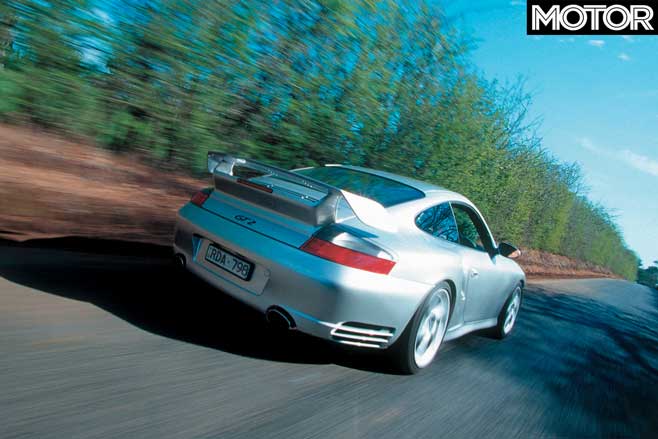
For all that the ride isn’t as rocky as you’d think. Firm, yes and with massive damping rebound in particular but you get the feeling Porsche has backed off on the spring rates more than it would if it was purely a racer. That said, there’s adjustment for ride height, camber and caster if you want to get seriou5 about springs and slicks and go racing.You can’t imagine many road cars would get close to a GT2 on the track. On the road it is potent enough, although getting back to my mountain road, you have to choose the scenery reasonably carefully. There’s feedback from all sources: steering, brakes, suspension, seemingly every block of the tyre tread. Feed the power on through a sweeper and there’s not so much as a squat or a stammer, but the GT2 just hooks in and goes.Throw in bumps and wet patches and things slow down. It doesn’t take much to get the rear wheels a-squirming, and there’s not much warning of all that engine weight in a wheelbase shorter than a WRX coming around to say hello. The limits are there, but in these conditions I’m not about to find them.

A German autobahn would be a different story, and of course we’ve got roads like that except for two vital differences: speed limits, and galahs with Camrys and caravans. To get the best out of GT2 you’re going to end up breaking rocks or With a saucepan in the neck.But then, the GT2 is not really a car. It’s a destructive force, a machine of vengeance and a nice piece of one-upmanship over the next bloke in a common 911 Turbo. I’d actually rather have the Turbo, Which is already quicker than anything else plus it is comfortable and a hundred grand cheaper. Or just as happy in a 911 Carrera that’s $220,000 less. Or a Boxster S is not too shabby either. But then, maybe I’m just too easily pleased.
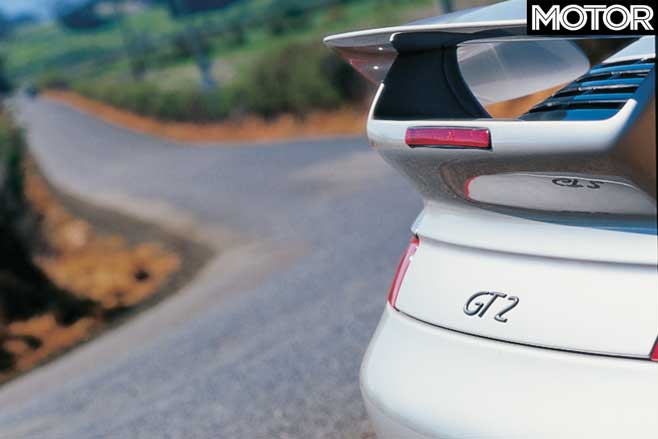
FAST FACTS 2001 Porsche 911 GT2 BODY: 2-door coupe DRIVE: rear-wheel ENGINE: 3.6-litre flat-six, DOHC, 24v, twin-turbo BORE/STROKE: 100.0 x 76.4mm COMPRESSION: 9.4:1 POWER: 340kW @ 5700rpm TORQUE: 620Nm @ 3500rpm (est) WEIGHT: 1440kg POWER-TO- WEIGHT: 236kW/tonne TRANSMISSION: 6-speed manual SUSPENSION: MacPherson struts with anti-roll bar (f); multi-links with coil springs, anti-roll bar (r) L/W/h: 4446/1830/1275mm WHEELBASE: 2355mm TRACKS: 1485/1520mm (f/r) BRAKES: 350mm cross-drilled ventilated ceramic composite discs, 6-piston calipers (f); 350mm cross-drilled ventilated ceramic composite discs, 4-piston calipers (r) WHEELS: 18.0 x 8.5-inch (f); 18.0 x 12.0-inch (r) TYRES: Michelin Pilot Sport Radial X, 235/40R18 (f); 315/30R18 (r) PRICE: $399,000
PERFORMANCE (claimed) 0-100km/h: 4.1sec 0-160km/h: 8.5sec 0-200km/h: 12.9sec
TOP SPEED: 315km/h (claimed)

